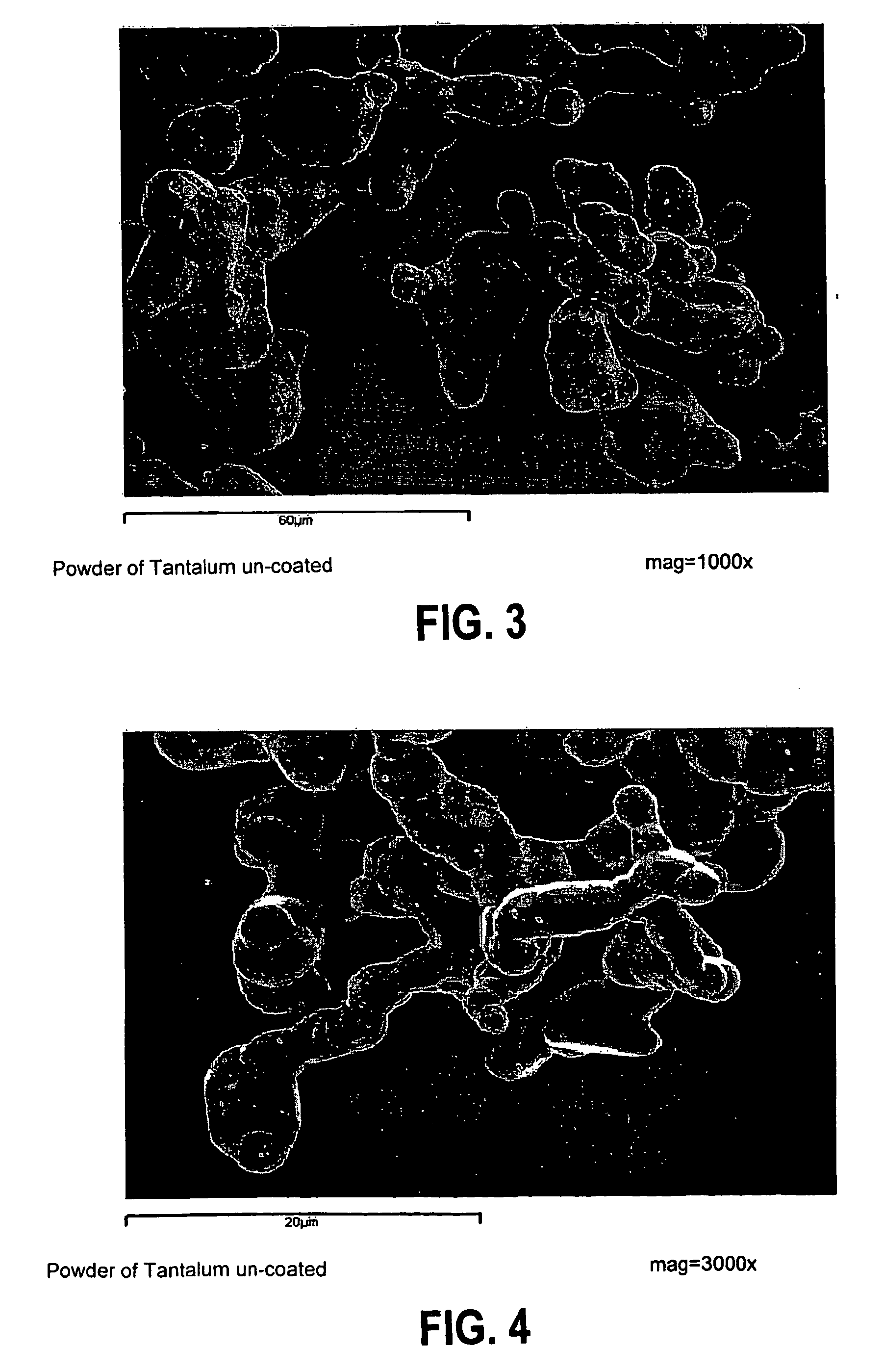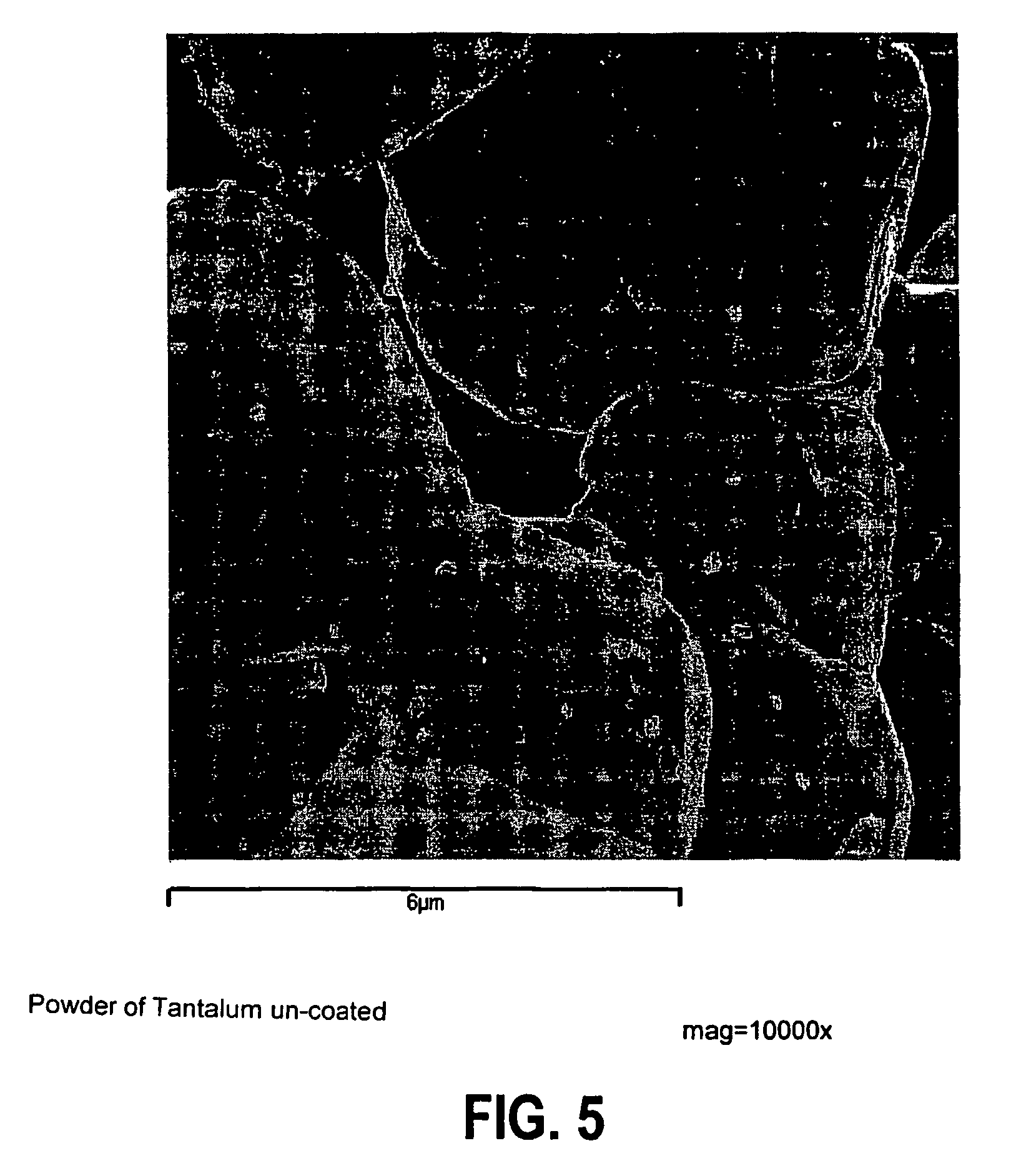Bone cement containing coated radiopaque particles and its preparation
a radiopaque particle and bone cement technology, applied in the field of bone cements, can solve the problems of fracture, fracture, bone cement fillings can give way, etc., and achieve the effect of considerable mechanical strength and limited invasiveness
- Summary
- Abstract
- Description
- Claims
- Application Information
AI Technical Summary
Benefits of technology
Problems solved by technology
Method used
Image
Examples
Embodiment Construction
[0063]A radiopaque acrylic bone cement for orthopaedic use according to the invention essentially comprises a solid phase dissolved in a liquid phase.
[0064]The solid phase is essentially composed of a mixture of at least one acrylic polymer, for example based on poly(methyl methacrylate), at least one free-radical polymerization initiator and at least one or more substances which are opaque to X-rays. More specifically, the mixture can contain poly(methyl methacrylate), poly(methyl methacrylate / styrene), poly(butyl methacrylate) and copolymers thereof and benzoyl peroxide as initiator. Moreover, the solid-phase mixture may contain one or more pharmacologically active substances.
[0065]The liquid phase is essentially composed of a mixture of a monomer, at least one accelerator and at least one stabilizer. More specifically, the monomer can consist of monomethylmethacrylate and the accelerator can consist of N,N-dimethyl-p-toluidine.
[0066]Referring to FIG. 1, the hardened bone cement, ...
PUM
| Property | Measurement | Unit |
|---|---|---|
| Fraction | aaaaa | aaaaa |
| Fraction | aaaaa | aaaaa |
| Percent by mass | aaaaa | aaaaa |
Abstract
Description
Claims
Application Information
 Login to View More
Login to View More - R&D
- Intellectual Property
- Life Sciences
- Materials
- Tech Scout
- Unparalleled Data Quality
- Higher Quality Content
- 60% Fewer Hallucinations
Browse by: Latest US Patents, China's latest patents, Technical Efficacy Thesaurus, Application Domain, Technology Topic, Popular Technical Reports.
© 2025 PatSnap. All rights reserved.Legal|Privacy policy|Modern Slavery Act Transparency Statement|Sitemap|About US| Contact US: help@patsnap.com



